What is Corrosion Resistance?
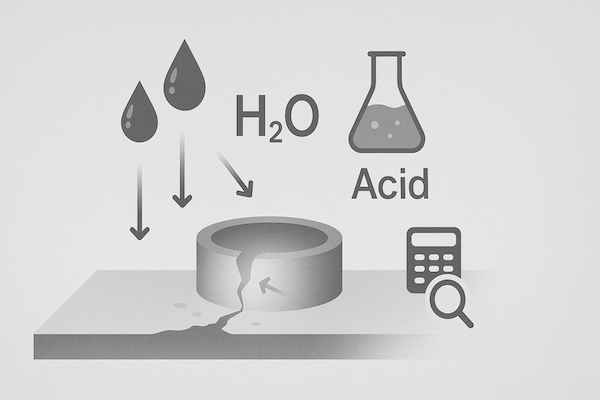
Corrosion resistance refers to a material’s ability to withstand chemical degradation caused by interactions with its environment—such as moisture, acids, alkalis, salts, or gases. Corrosion typically leads to oxidation, pitting, surface erosion, and eventual weakening of the material’s structure.
Materials with high corrosion resistance maintain their mechanical integrity, dimensional stability, and surface finish even under harsh chemical exposure.
Why is Corrosion Resistance Important?
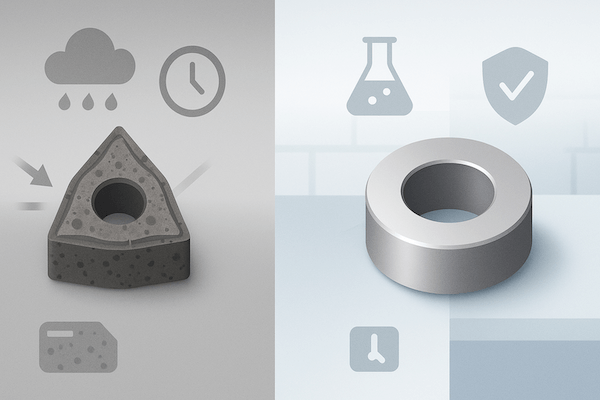
In many industrial applications, tools and components operate in corrosive environments such as:
Saltwater or marine conditions
Acidic or alkaline process fluids
High-humidity industrial plants
Oil, gas, or chemical refineries
Corrosion can compromise tool strength, reduce accuracy, accelerate wear, and even lead to unexpected failure, resulting in costly downtime and maintenance.
Tungsten Carbide and Corrosion Resistance
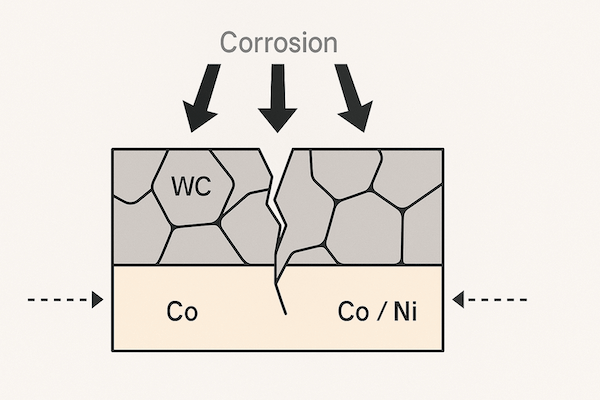
Tungsten carbide (WC) is a hard ceramic compound that provides excellent wear and abrasion resistance. However, when used in cemented carbide form (WC bonded with a metallic binder like cobalt or nickel), its corrosion resistance depends heavily on the binder phase.
Binder Influence:
Cobalt-bonded carbides (WC-Co): Susceptible to corrosion, especially in acidic or chloride-rich environments.
Nickel-bonded carbides (WC-Ni): Offer improved corrosion resistance compared to cobalt, making them better suited for marine or chemical exposure.
In general, pure tungsten carbide grains are chemically inert, but the metallic binder phase is vulnerable to corrosion, which can lead to binder leaching and grain detachment over time.
How Corrosion Affects Cemented Carbide Tools
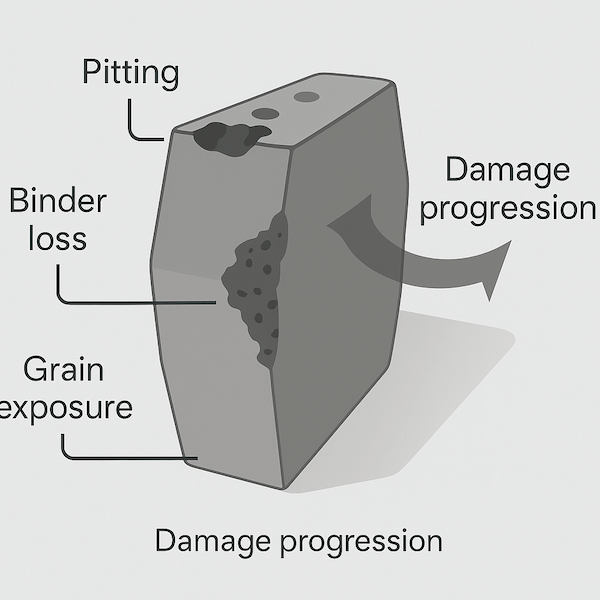
Corrosion in tungsten carbide tools can lead to:
Loss of binder phase, weakening the structure
Surface pitting and erosion, reducing precision
Grain boundary attack, leading to microcracks
Accelerated wear and shorter tool life
This is especially critical in tools exposed to both chemical attack and mechanical stress, such as slurry nozzles, valve seats, oilfield parts, and forming tools in wet or acidic environments.
Enhancing Corrosion Resistance in Tungsten Carbide
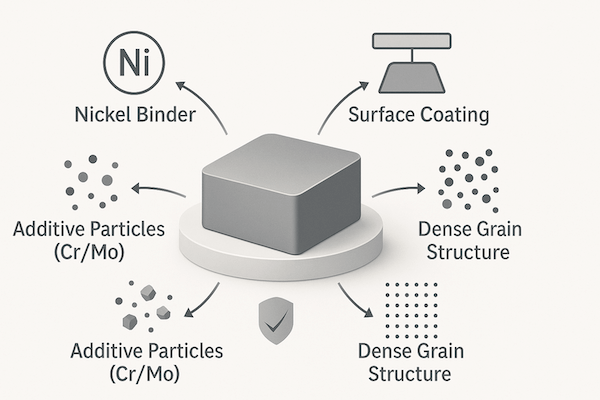
To improve corrosion performance, manufacturers may:
▸ Use corrosion-resistant binders:
Nickel or Ni-based alloys instead of cobalt for chemically aggressive environments.
▸ Apply protective coatings:
Such as TiN, TiCN, or CrN coatings that form a chemically stable barrier.
▸ Add corrosion inhibitors:
Trace elements like Cr, Mo, or V can be introduced to improve resistance.
▸ Optimize carbide grain structure:
Dense, uniform microstructures reduce porosity and crack initiation points.
Typical Applications Requiring High Corrosion Resistance
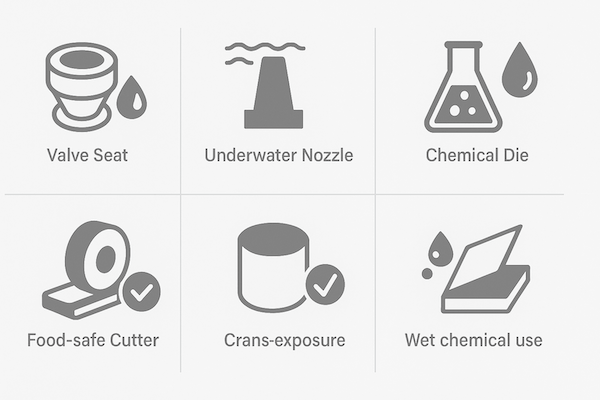
Cemented carbide tools with enhanced corrosion resistance are essential in:
Oil & Gas Industry – valve trims, pump sleeves, and flow control components
Marine Engineering – underwater cutting tools and wear parts
Chemical Processing – seals, dies, and metering tools exposed to acids/alkalis
Food & Pharmaceutical – sanitary-grade tools needing corrosion stability
Pulp & Paper – cutting blades exposed to moist, chemical-laden environments
In these applications, corrosion resistance ensures safety, longevity, and precision.
Testing Corrosion Resistance
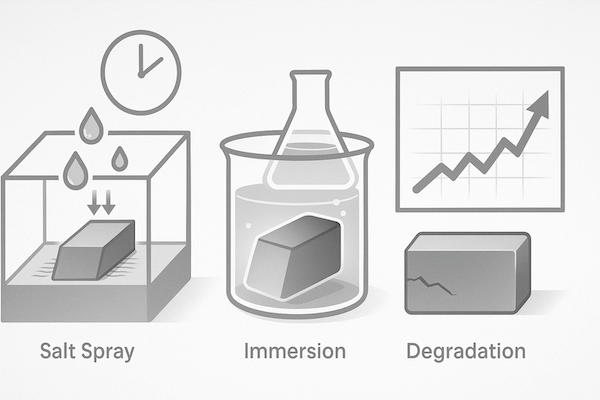
Corrosion performance is often evaluated through:
Salt spray (fog) testing (ASTM B117)
Electrochemical impedance spectroscopy (EIS)
Immersion testing in acidic/alkaline solutions
Field exposure trials in end-use environments
These methods help quantify how well a specific carbide grade or coating resists degradation under realistic conditions.
Conclusion
Corrosion resistance is a critical performance factor for tungsten carbide tools used in aggressive environments. While WC itself is highly stable, the binder phase often determines corrosion performance. By selecting the right binder, applying protective coatings, and optimizing microstructure, engineers can significantly enhance the durability and chemical stability of cemented carbide components—maximizing their value and reliability across demanding industries.
